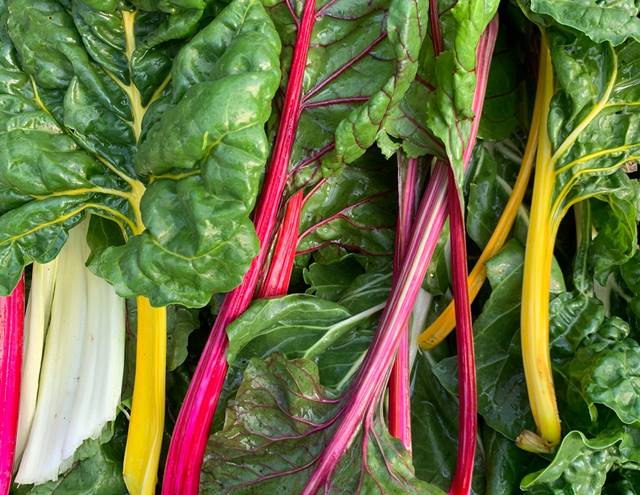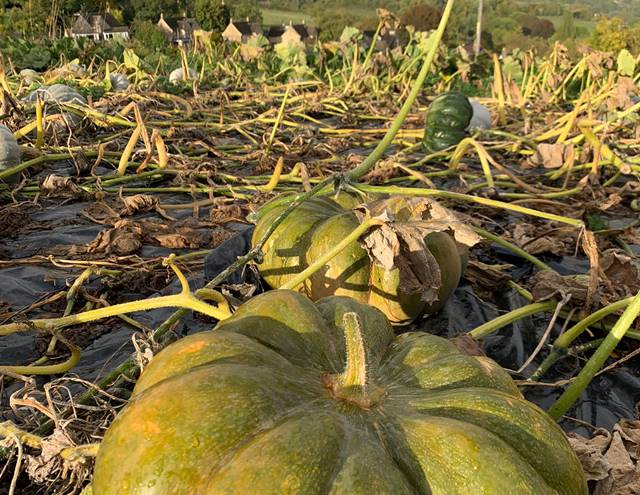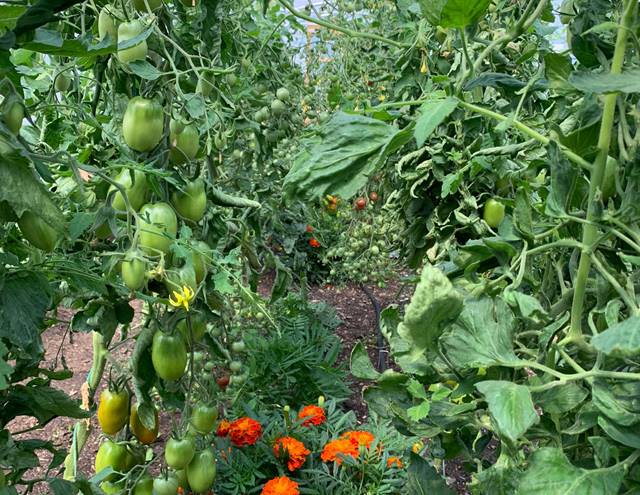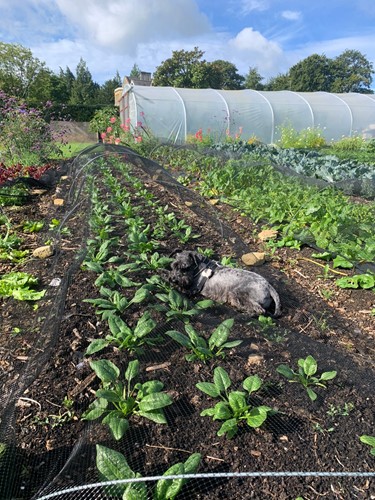
While many view this season as a time to tuck the garden in for a long winter's nap, the reality in a vegetable garden is quite the opposite – it's a time for rebirth. Amidst the general tidying up, it's the perfect moment to put all that meticulously crafted compost to good use. By enriching newly cleared beds with it, we create a sumptuous feast for the resident worms and other soil-dwelling organisms, who will transform it into nutrient-rich sustenance for next year's crops.
The harvesting also continues unabated, as we endeavour to grow produce year-round. Now, it's the turn of the brassicas, with the colder weather enhancing the vibrancy of their leaves. The visually stunning juxtaposition of tall rows of purple sprouting broccoli slightly shorter curly kale, and savoy cabbages paint a landscape of exquisite form with every shade of green.

Amidst the lush greenery, winter radishes have thrived during the warm and wet October. Best sown towards the end of July, these radishes surpass their salad cousins in size and surprise with their vibrant colours that permeate the flesh. I highly recommend "Green Luobo" and "Red Flesh" for a culinary adventure.
As I write this on Halloween, our homegrown pumpkin display at the entrance of Homewood is nothing short of epic. I've selected varieties that truly stand out, like the classic "Vif Rouge" Cinderellas carriage pumpkin and the gnarly "Zombie" with barnacle-like protrusions. While most of them will eventually find their way into the compost, the "Crown Prince" winter squash, though less glamorous, graces our kitchen with its superior flavour, perfect for our current menu's soup and orzotto dishes. Any remaining squash still sitting outside must be brought in soon to prevent stalks from turning mouldy. I plan to store some in my conservatory, as the flavour is said to intensify with time as water evaporates, so I will try and keep some till February.

There's no rush yet to harvest beetroot, carrots, fennel, and celery, as they can withstand a light frost.
Leeks have proven to be my Achilles' heel, as for the second year running, the allium leaf miner has wreaked havoc on nearly my entire crop. Flies lay their eggs on the leaves, which hatch and tunnel through the layers of the leeks, causing internal damage. However, I'm not one to easily give up, and I'm determined to try covering them with finer netting next season.
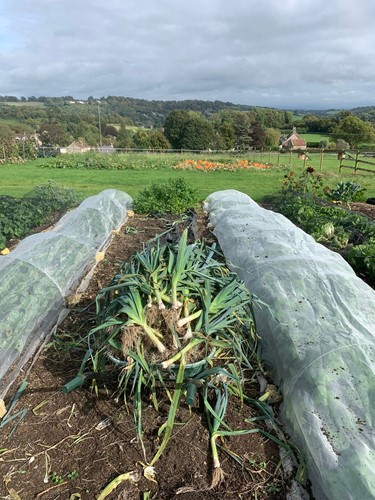
Slugs and tiny worms are now ubiquitous, and they seem to have a particular fondness for infiltrating the leafy heads of lettuce and cabbages, making it a challenge to transport our produce to the kitchen without some unwanted hitchhikers.
Whiteflies have taken residence beneath the leaves of every brassica plant this autumn, though they don't appear to inflict noticeable damage. These are not the same as the sap-sucking greenhouse whiteflies and are a normal seasonal presence, so I'm inclined to let them be without taking any action against them.
The white mustard seeds I sowed as green manure in some of the cleared, vacant beds last month have flourished, blanketing the surface with lush green foliage. This cover crop will eventually die off with the first frost, further nourishing the soil.

Garlic, sown just a couple of weeks ago, wastes no time in displaying its intent, with the first green shoots poking out of the soil, a promising sign as we begin to turn our thoughts toward the coming spring.
Wishing you all a warm and cosy November
My new recipe is up - WINTER SQUASH ORZOTTO
Until next time…
Darren Stephens
Chef-Gardener, Homewood







